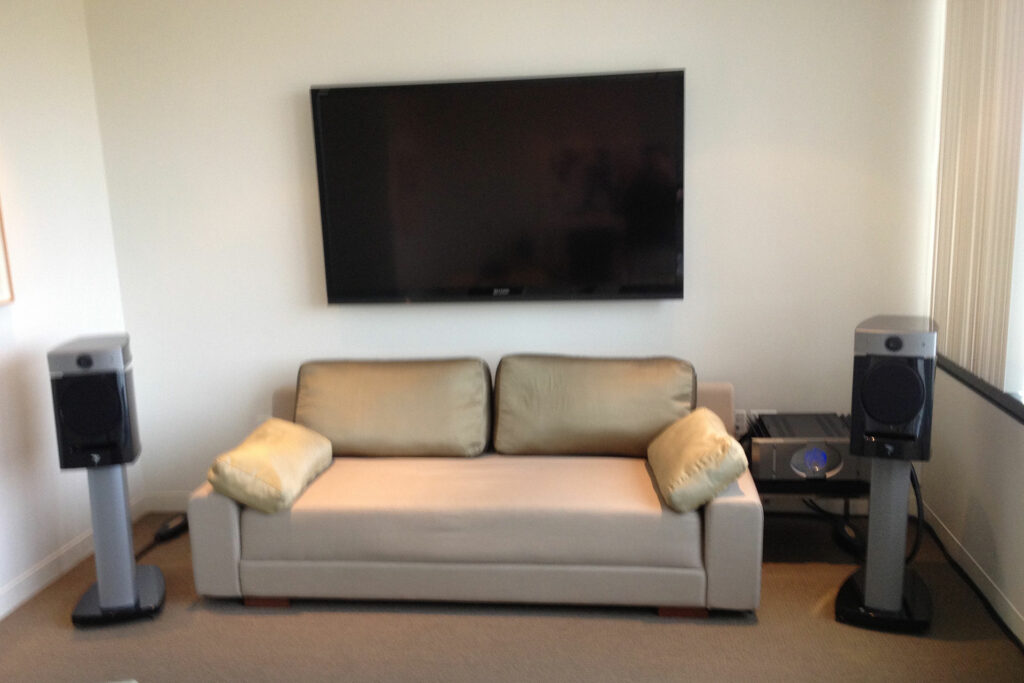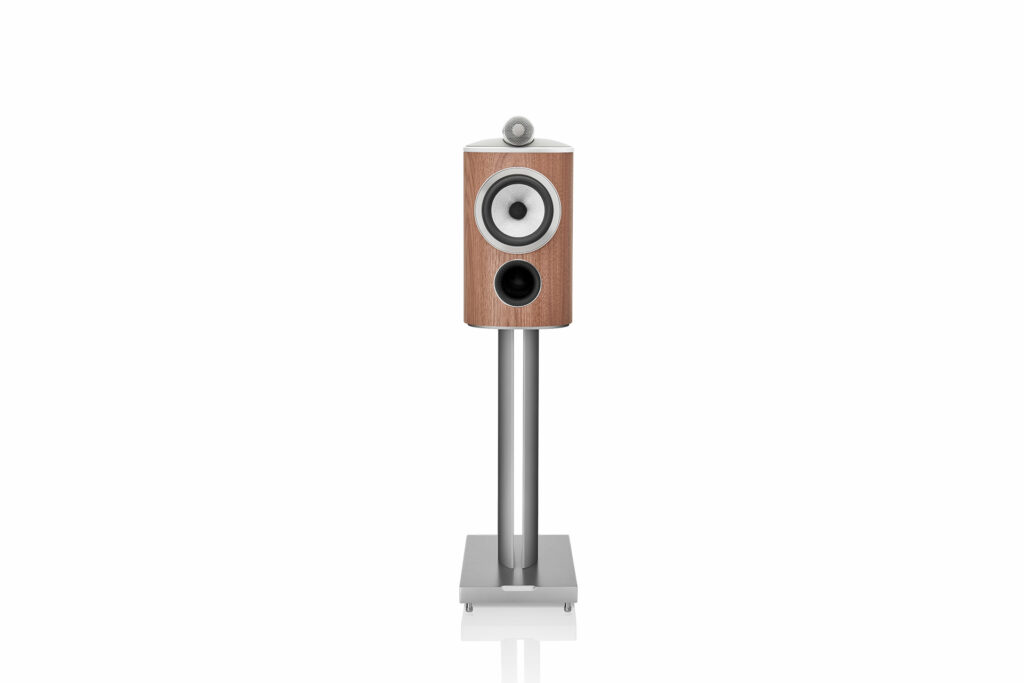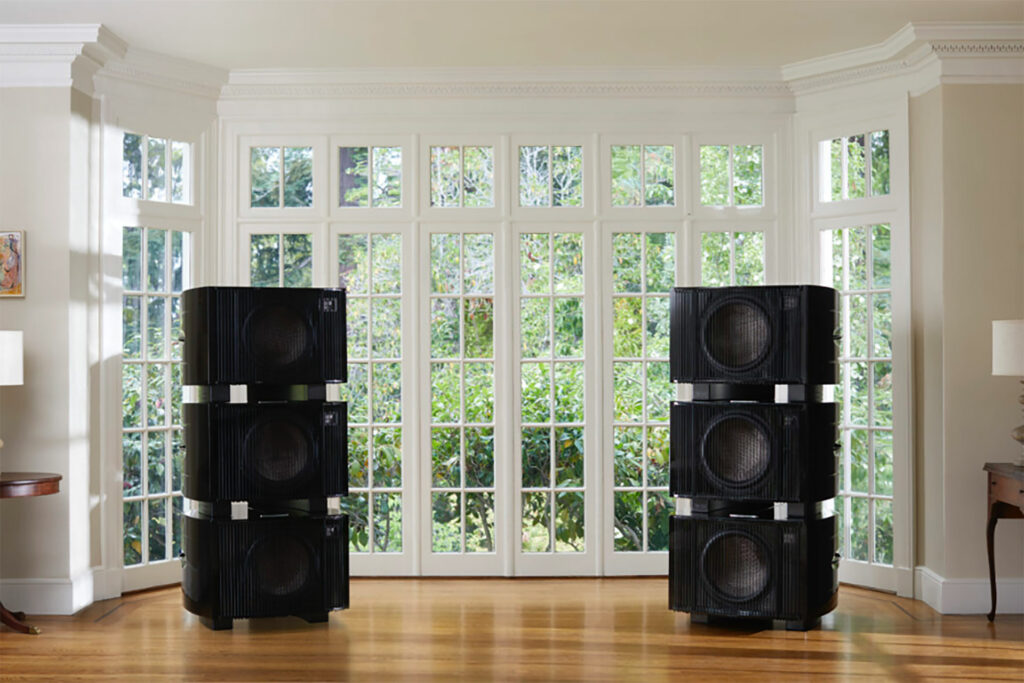One of the key editorial tasks that we took on was taking on audiophile lore and cliché and seeing how it holds up over time. We’ve recently stepped into the “all DACs sound the same” topic (hint: they don’t). We’ve waxed poetically on the modern-world advantages and scientific physical disadvantages of vinyl in 2024. Today, we are looking at the world of audiophile speakers, specifically, what configuration of speakers are best for you and your system. This, too, has been a matter of great debate with audiophiles over the decades, and there is a case to be made for both audiophile bookshelf speakers as well as larger, floorstanding speakers. Ready? Set? Go….

The Case for Using Bookshelf Speakers in Your Audiophile System
Back when actual physical offices were a thing (think: pre-pandemic), we leased an office at 12400 Wilshire Boulevard that I used as a home base to run HomeTheaterReview.com and AudiophileReview.com in the late 2010s. In retrospect, I quite foolishly invested over $70,000 of my own money (above the money that the chintzy building owner offered amortized as part of the lease) to make this slightly-under-1,000-square-foot home-away-from-home to have all of the goodies and toys to make me and our staff comfortable while at work. We built an IKEA kitchen and installed including some better-than-expected Bosch appliances. We had Riedel stemware and excellent Chardonnay, as well as some well-aged Macallan single malt Scotch for anybody that might stop by. We also installed premium LED lighting cans as part of an entire Crestron control system. Before that, we ran HDMI cables in the walls, so that we could run HDTVs if (and where) needed. In my office, I learned quickly that I need retrofitted window shades as at a certain time in the evening, because my office got so bright that I couldn’t see a thing in the beaming sunlight. Crestron makes custom shades that can be controlled by their home automation system, but didn’t need commercial power, thus ran on D batteries. That solved one problem, but my AV needs were a whole other thing.
As one who likes to bring the best of the CI (custom installation) world into the audiophile domain, I had a cabinet maker build me a desk-matching maple open back (and front) rectangle with some big hospital-grade locking wheels. Inside said rectangle went a small Middle Atlantic rack, where I installed goodies like an Oppo BDP-203 disc player, a cable box, a Benchmark Media DAC/preamp and a few other small items. On the other side of the room, and connected with cables run through the walls and ceiling, was a 70-inch Sharp HDTV, a Pass Labs XA-30.5 Class-A power amp, Focal Diablo Utopia stand-mounted speakers and a small SVS subwoofer. The system was normally controlled via an iPad using the Crestron app, with the music being controlled my various Apple computer devices, such as a Mac Pro tower, as well as various Apple MacBook Pro laptops.
Rarely did this system ever get to be cranked up louder than a polite conversation, unless it was a weekend when everybody was hopefully at home, not at the office. Thankfully, there was a small but operable window in that office that allowed some ocean breeze to flow in at off times or after hours, as AC was priced at $300 per hour which was beyond my budget, even back then. You could hear me cranking Rush 11 floors down and I am not going to apologize. Not then or today.
A conversation that I remember vividly with Focal’s then head of sales, John Bevier (boy, do we miss the Focal people from before the Focal-Naim merger), was about just how much of the sound you can get with their high-end but smaller Focal Diablo Utopia speakers, plus a sub (for about $10,000 retail at the time), as compared to their $300,000 reference speakers. Are the reference speakers better? Yes, by all means they are, but for 1/30 of the price, I could get what Mr. Bevier (and his then boss, Daniel Jacques) thought represented maybe 85 percent of the sound. That’s just a really strong audiophile value. I recently had the chance to hear some somewhat vintage reference Focal speakers from that era in the killer audiophile listening room at Boulder Amps in Colorado. The Grand Utopias make an awesome sound, but at a tiny fraction of the reference speakers’ asking price – it is hard not to be impressed by the sound of Focal Diablo Utopia speakers, considering their performance versus price.

The Case for Using Floorstanding Speakers in Your Audiophile System
That office is long gone, as business conditions changed a few years before the COVID-19 pandemic. During my time locked up at home, like many audiophiles, I returned to my roots by installing a sweet-looking and high-performance audiophile system, including a pair of Bowers & Wilkins 802 D4 speakers with a similar audiophile rig in terms of electronics, meaning Benchmark Media DAC, Bricasti digital, an Anthem STR preamp and a Pass Labs XA-25 Class-A amp and some Wireworld and Monoprice cables. While a rarity for me, I do not use a subwoofer in this system configuration. Bowers & Wilkins 802 D4s report a low bass output of 14 Hz, which is Earthshakingly low, but they don’t disclose how loud that 14 Hz is measured at, which is likely pretty quiet. 20 Hz is considered the lowest sound that we can hear, but humans can “feel” sound that is lower. The low note (A “C,” if I remember from my pathetic attempt to learn the instrument in music school as a Music Industry/Business major – not a Performance major) on a piano is in the high 20 HZ range. The low note on a bass guitar is around 42 to 47 Hz, depending on who you ask. Subwoofers can reproduce sounds that are way lower than 42 Hz, but most of my music doesn’t go that low, and I’ve been just fine in the low-frequency department with just the Bowers & Wilkins 802s on their own. Would a sub help? Yes, but I don’t have a good place to put it in my far-less-than-perfect (that’s being really polite, folks) listening room.
Would a pair of Bowers & Wilkins 805 D4s provide nearly all of the same frequencies at the same quality as the 802s? Yes, they would and for a fraction of the price. I think standard Bowers & Wilkins 805 D4s are $8,500 per pair, when 802 D4s are priced per pair at $28,000. That’s a big delta in cost. My specific issue is one of physical safety, as I have a two-year-old roaming around at home. I’ve discussed the high standards for tip-over in the E.U., which Bowers & Wilkins meets (or exceeds), but even with that thoughtfully in place, I still had the insured and bonded audiophile baby-proofer actually strap the speakers to the wall. Just last week, we felt a 4.6 earthquake in nearby Malibu. We obviously need to err on the side of extra safety, as I am old enough to remember how many of our clients’ Apogee speakers were destroyed in the 1994 Northridge earthquake (hint: all of them, meaning dozens of pairs). I can’t have that at home, thus I need well-made, well-balanced speakers with not just feet on the bottom, but also outriggers designed to help in a tip-over event.

So What Sounds Better – Floorstanding Speakers or Bookshelf Speakers?
When we talk to younger audiophiles, the one thing that they never fail to bring up as their number one, most important topic is value. If you are early in your audiophile journey, you likely haven’t had the time to build significant equity into your audiophile components. That makes it necessary to get the most performance from an understandably limited amount of audiophile investment capital. That’s where smaller bookshelf speakers (aka: stand-mounted speakers) come into play. They are smaller, but they cover most of the frequency range that we hear with the best possible components and designs. What they miss out on is deep bass. Do you need deep bass if you are not rocking out on EDM (electronic dance music) or organ music? Yes, you do, but the good news is that a reasonable audiophile subwoofer can be had for, say, $1,000. These subwoofers often have sophisticated DSP and/or room correction that make them blend into the acoustics of a room perfectly, while crossing over with the main stand-mounted speakers with equal aplomb.
Smaller speakers are also often easier to drive, thus money can potentially be saved in the amplifier department. That might be somewhat irrelevant with today’s exciting new Class-D amps costing a fraction of more traditional and highly-respected audiophile Class-AB amps, but then again, this is a source of value that newer audiophiles tend to rally around.
Smaller speakers also have the ability to fit into trickier (and more diminutive in size) rooms in ways that larger audiophile floorstanding speakers likely do not. If you look at photos from around the world of audiophile systems, it is hard not to have to pick your jaw up off the ground when you see some of the Japanese or Chinese installations that feature a physically large pair of Wilson Audio speakers pretty much shoehorned into a tiny listening room. I am sure they still sound like Wilsons, but that is the audiophile version of driving your La Ferrari around Manhattan at rush hour.

Why Do Some Audiophiles Think That Subwoofers Are Evil?
Now we are getting deep into the audiophile cliché here, and for good reason. I spoke with one audiophile who feels strongly that subwoofers aren’t needed, but I could never understand why. This person has a rock-solid understanding of speaker design, but what I learned when we dug into the topic is that he had never worked with or experienced what a modern subwoofer can do in terms of setup. Pre-Sunfire True Subwoofer days of easily 20 years ago, subwoofers were much more of a pain in the ass to set up. Who really knew what the different knobs on the back of the sub did? How do you get your sub to blend beautifully with your speakers? I used a professional acoustician and pro audio equalizers to get the results that I wanted in my audiophile-grade home theater systems, but that isn’t going to be reasonable for 98 percent of all FutureAudiophile.com readers. Don’t worry, today’s subwoofers are 10 times easier to set up using room correction/DSP/EQ, and anybody can do it. You don’t need an acoustician like Anthony Grimani, Keith Yates or, in my case, Bob Hodas to tune your room to get very respectable bass (not that they can’t deliver it the best). More realistically, you need about 15 minutes with an app and an included setup microphone, and you are pretty much all the way there.
Today is the day that we should dispel the concept that subwoofers aren’t an important part of all audiophile systems. They are a cost-effective, easy-to-configure and powerful addition to anybody’s system, no matter what speakers are being used. Subwoofers are an easy upgrade. More than one subwoofer also makes for a more well-balanced, harder-to-sonically-locate source of bass in an audiophile system. This isn’t some nth degree of performance difference that we are talking about here, either. Audiophile subwoofers, when paired with smaller bookshelf speakers or floorstanding speakers, bring the visceral slam or impact that live music or the in-studio experience often demands. Lastly, a properly crossed-over subwoofer can allow the sub, and its likely Class-D internal amp, to do what it is good at, while leaving your speakers crossed over in a way where they do what they are best designed to do, which is everything above the lowest octave of music. That makes your amp have to work a little bit less to give you the sound that you need.

Some Final Thoughts on Bookshelf Versus Floorstanding Speakers…
As you saw in my case, the choice between floorstanding speakers and shelf-mounted speakers is a very personal one. There is no right answer for every system. A well set-up subwoofer can benefit nearly any audiophile system, but the draw of getting most of a reference-level speaker for a tiny fraction of the price will appeal to some audiophiles. The sleek look of many of today’s floorstanding speakers appeal to others over speakers that come with even the sexiest stands. In my case, safety in my listening room was the driving factor in my speaker-buying decision.
Whatever you decide going into your next audiophile speaker upgrade, know that there are a number of ways to get to the audiophile promised land. While they all are different paths, none of them are wrong, and none of them will get you kicked out of the audiophile club, as has been intimated in the past. Measure all of the key factors that matter to you, do your research and listening accordingly en route to making your next investment. Trust your instincts, because you are going to make the right decision, no matter what decision that is.
What configuration of speakers do you have now? What will your speakers look like in the future? Will they be floorstanding or stand-mounted? Do you have a subwoofer? If not, why? Will you upgrade to a subwoofer(s) someday? Comment below and we will moderate your comments very quickly.




I use Magnepan 0.7 speakers with two DWM panels that are as big as I can fit into my 26-foot diameter Futuro house.
One thing to consider is that a 2-way standmounted (or bookshelf) loudspeaker almost always has a less complex crossover than a 3-way (Tweeter, Midrange, Woofer) loudspeaker does.
Famed UK classical recording engineer Tony Faulkner usually location-live monitors with QUAD electrostatics. But if the large electrostatic panels can’t fit into whatever he is using as a recording shack, then he insists on using 2-way standmounted loudspeakers, because he claims that he can hear the Phase effects on the midrange driver in a 3-way. Which, almost always has both roll-in and roll-out crossover slopes.
So, my educated guess is that a 2-way plus subwoofer (or, preferably, subwoofers) system will have better Phase integrity than the 3-ways Tony complains about, because a true subwoofer will cross over down at 80Hz to 120Hz, keeping the Phase effects away from the all-important Midrange. Furthermore, you usually have the option of running the satellite 2-ways without a bass cut.
john
If you don’t have digital room correction capability or have an all analog system, finding locations in a listening room free of bass room modes is demanding & time consuming. Especially if you only have music recordings as a guide. Last summer I repositioned my bookshelf speakers & found good new locations. Last fall I made improvements to these 20 year old Paradigm bookshelf speakers to reduce overly prominent bass. This was so successful that I decided to add a Boston Acoustics subwoofer however getting it ‘dialed in’ was equally frustrating & I was unhappy with the sound. Last winter I investigated floorstanders & decided to try a Q-Acoustics model. It worked well in the existing locations & I’m now happy with the sound. The bookshelf speakers & stands have been repurposed for my home theater.
A big advantage of a 3 way floor stander with deep bass is that the sub to mid crossover is both low pass and high pass. Most subs don’t have a high pass which means the mid range driver(the woofer of the stand mount) is still working full range. A high pass takes a huge load off the mid range allowing it to be more open, more detailed and play louder. And the bulk of the music is in the mid range.
A sub will usually have an advantage in bass extension and it can be placed away from the main speakers in a place in the room where bass response is better. Multiple subs improve this even further. But sacraficing mid range for bass that is often not in a recording is a poor trade off in my opinion. Of course subs with high pass would be ideal but designing a high pass for the upper range speakers when that high pass must work with multiple different main speakers with multiple characteristics is like playing darts blind folded.
It seems to me that asking a single woofer to move mechanically to every input is asking too much. The sounds will at times be washed together.